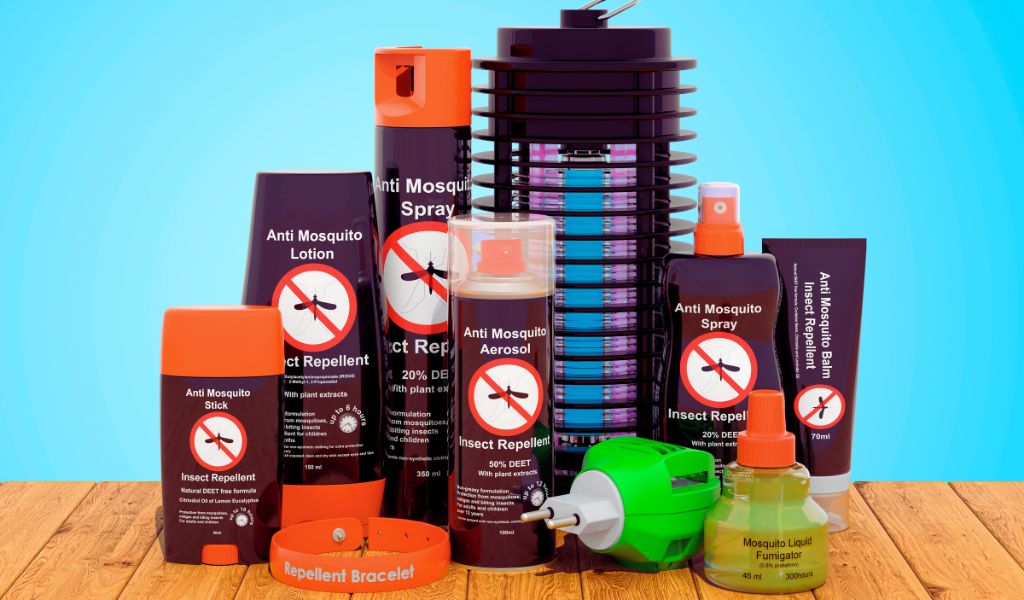Insects such as fleas, ticks, and mosquitoes can cause significant discomfort and health risks for dogs. Choosing the right insect repellent is essential to protect your pet without causing harm.
Here’s a guide to safe insect repellents for dogs.
Safe Chemical Insect Repellents
1. Permethrin
Permethrin is a synthetic chemical that is effective against ticks and fleas. It is commonly found in many canine insect repellent products and is considered safe when used according to the instructions.
2. Fipronil
Fipronil is another effective chemical used to control fleas and ticks. It is often found in topical treatments like Frontline and is safe for dogs when applied correctly.
3. Methoprene
Methoprene is an insect growth regulator that prevents flea eggs from developing into adults. It’s commonly used in combination with other insecticides in products like flea collars and topical treatments.
Safe Natural Insect Repellents
1. Essential Oils
Certain essential oils can repel insects without harming your dog. However, they must be properly diluted before use.
Lavender Oil: Known for its calming properties, lavender oil can also repel fleas and ticks.
Eucalyptus Oil: Effective against mosquitoes and fleas.
Peppermint Oil: Acts as a deterrent for fleas and mosquitoes.
Citronella Oil: Commonly used to repel mosquitoes.
2. Neem Oil
Neem oil is a natural insect repellent that is safe for dogs. It can be applied directly to the skin or added to shampoos.
3. Apple Cider Vinegar
Apple cider vinegar can help repel fleas and ticks. Mix equal parts of apple cider vinegar and water and spray it lightly on your dog’s coat.
DIY Insect Repellent Recipes
1. Essential Oil Spray
Mix 10 drops of lavender oil, 10 drops of eucalyptus oil, and 2 cups of water.
Spray lightly on your dog’s coat, avoiding the face.
2. Apple Cider Vinegar Solution
Mix equal parts of apple cider vinegar and water.
Spray on your dog’s coat, avoiding eyes and open wounds.
Application Tips and Safety Measures
Avoid Sensitive Areas: Never apply insect repellents near your dog’s eyes, nose, mouth, or any open wounds.
Dilution is Key: Always dilute essential oils properly to avoid skin irritation.
Patch Test: Before full application, do a patch test to ensure your dog does not have an adverse reaction.
Consult Your Veterinarian: Always check with your vet before trying a new repellent, especially if your dog has any pre-existing health conditions.
Choosing the right insect repellent is crucial for your dog’s health and comfort. Safe chemical options like permethrin, fipronil, and methoprene are effective and widely used.
Natural alternatives, such as essential oils, neem oil, and apple cider vinegar, can also provide protection when used correctly.
Always follow safety guidelines and consult your veterinarian to ensure the best care for your furry friend.
FAQs
Can I use human insect repellent on my dog?
No, human insect repellents, especially those containing DEET, can be toxic to dogs.
How often should I apply insect repellent to my dog?
The frequency depends on the product. Always follow the manufacturer’s instructions or consult your veterinarian.
Are there any side effects of using insect repellent on dogs?
Potential side effects can include skin irritation or allergic reactions. Always do a patch test first and monitor your dog for any adverse effects.
Can I use multiple insect repellents at the same time?
It’s best to use one product at a time to avoid interactions between different chemicals. Consult your veterinarian before combining treatments.
Are there any specific breeds that are more sensitive to insect repellents?
Some breeds with sensitive skin, like Bulldogs and Shar-Peis, may react more to certain repellents. Always start with a small amount and monitor for reactions.




